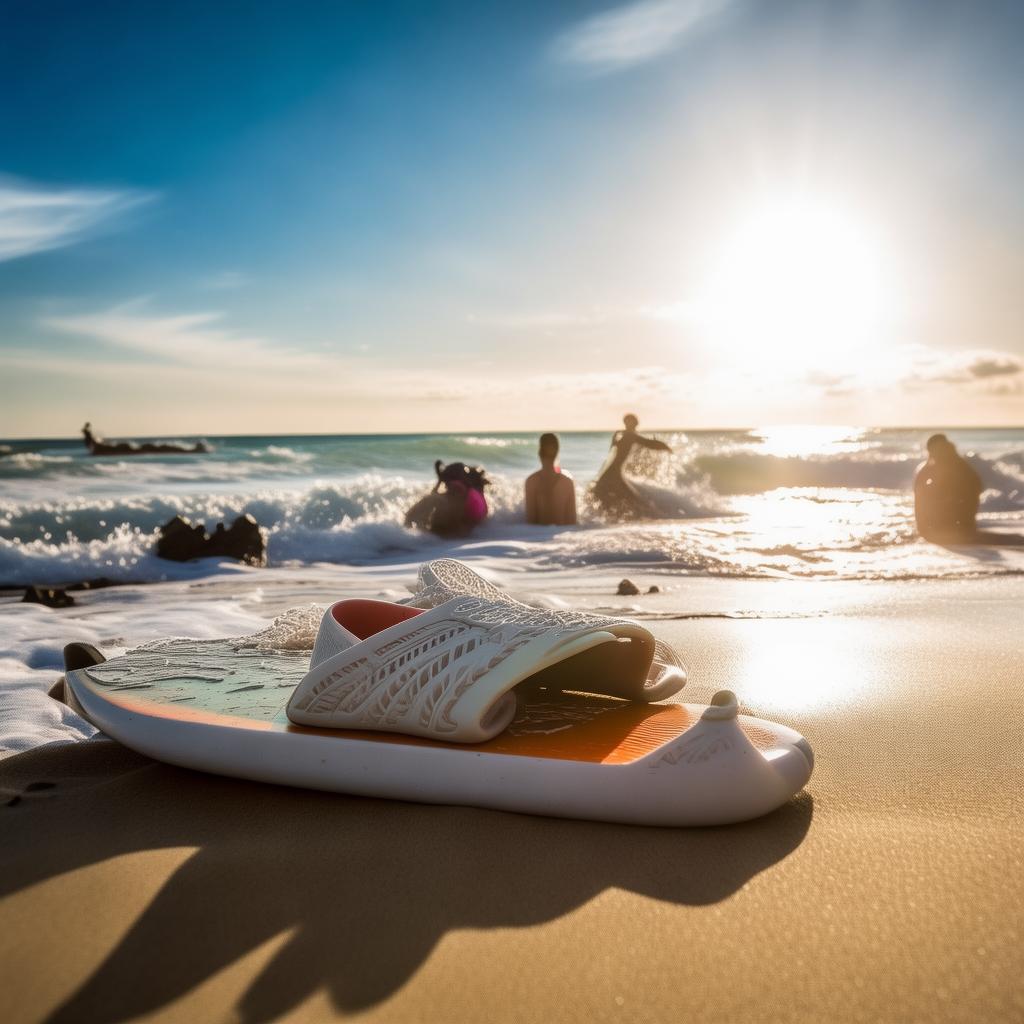What material is best for beach sandals?
What material is best for beach sandals?
Problem: What material is best for beach sandals?
Answer: The best material for beach sandals is typically a combination of durability, comfort, and water resistance. Rubber and EVA (Ethylene-Vinyl Acetate) are popular choices due to their flexibility and resistance to water and wear.
Why is this important?
When choosing beach sandals, it's crucial to consider the environment they will be used in. Beaches are harsh on footwear, with sand, water, and salt all contributing to wear and tear. The right material can make a significant difference in the longevity and comfort of your sandals.
Further Questions:
Why is rubber a good choice for beach sandals?
- Answer: Rubber is naturally water-resistant and provides excellent shock absorption, making it ideal for beach environments where you'll be walking on uneven surfaces and stepping on sharp objects.
What makes EVA a suitable material for beach sandals?
- Answer: EVA is lightweight, flexible, and has good shock-absorbing properties. It's also resistant to water, which is essential for beach sandals that will be exposed to saltwater.

Are there any materials to avoid for beach sandals?
- Answer: Materials like leather and canvas can be uncomfortable in the sand and are not as resistant to water and salt, which can lead to quicker wear and tear.
How do the materials affect the comfort of beach sandals?
- Answer: Comfortable beach sandals should have a cushioned footbed and flexible soles. Materials like rubber and EVA offer both comfort and durability.
Can the material of beach sandals affect their durability?
- Answer: Yes, materials like rubber and EVA are known for their durability. They can withstand the rigors of beach use, including exposure to saltwater and sand.

Are there any eco-friendly materials for beach sandals?
- Answer: Yes, there are eco-friendly materials like recycled rubber and natural rubber from sustainable sources that can be used to make beach sandals.
Conclusion:
The best material for beach sandals is one that combines durability, comfort, and water resistance. Rubber and EVA are top choices due to their properties, but eco-friendly options are also gaining popularity.
When selecting beach sandals, it's also important to consider the design and how the material will hold up over time. For instance, neoprene is another material that is gaining traction due to its stretchiness and ability to keep feet warm in cooler beach environments. It's often used in water shoes and can be a great choice for those who want a bit more protection against the elements.
Further Questions and Answers:
How does neoprene compare to rubber and EVA in terms of comfort?
- Answer: Neoprene is very comfortable due to its stretch and cushioning properties. It can mold to the shape of your foot, providing a snug fit that is both supportive and comfortable.
Can the material of beach sandals affect their grip on wet surfaces?
- Answer: Yes, the material can significantly impact grip. Sandals with non-slip soles made from rubber or other grippy materials are essential for safety on wet or slippery surfaces.
Are there any materials that are better for sandals that will be used in both saltwater and freshwater?
- Answer: Materials like high-quality rubber and certain types of EVA are excellent for both saltwater and freshwater environments due to their resistance to corrosion and wear.
How do the materials affect the weight of beach sandals?
- Answer: Lightweight materials like EVA and neoprene are preferred for beach sandals as they reduce the strain on the feet and make them easier to carry around.
Can the material of beach sandals affect their breathability?
- Answer: Some materials, like natural rubber, are breathable, which can help keep your feet cool and dry. However, many beach sandals are designed to be water-resistant, which may reduce breathability.
Are there any materials that are particularly good for sandals that will be used in rocky beach environments?
- Answer: For rocky beaches, you might want sandals with a sturdy sole that can protect your feet from sharp objects. Materials like vulcanized rubber are known for their durability and can withstand the rigors of rocky terrain.
Conclusion:
In conclusion, the best material for beach sandals is one that balances comfort, durability, and environmental considerations. Whether you opt for the classic flexibility of rubber, the cushioning of EVA, the stretch of neoprene, or an eco-friendly alternative, the key is to choose a material that suits your specific needs and the demands of the beach environment. Remember, the right pair of beach sandals can make a significant difference in your beach experience, from the comfort of your feet to the ease of carrying them from one location to another.